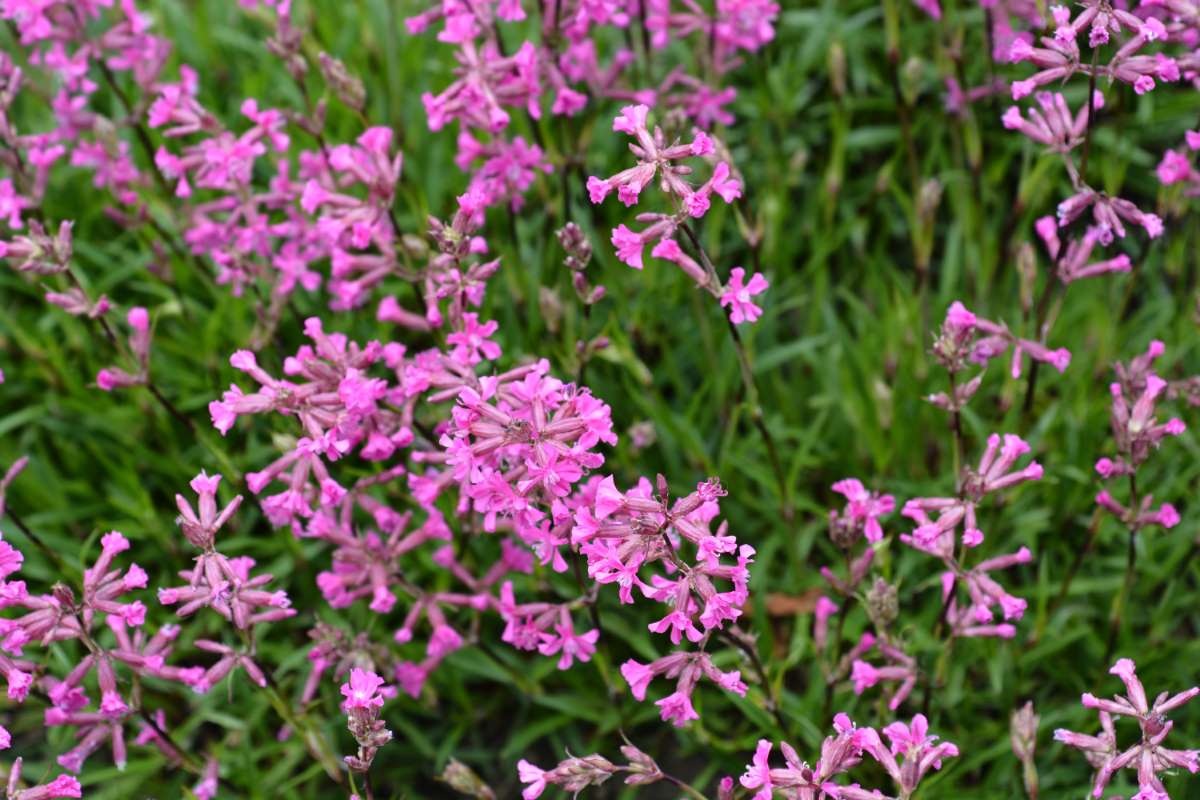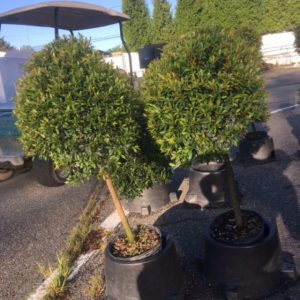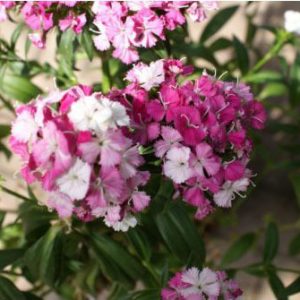Description
Lychnis – Viscaria – Campion – Catchfly –
There are about 20 species of biennials and perennials in this genus. They occur in sites ranging from damp meadows and woodland to alpine habitats, in Northern Temperate and arctic regions. They have erect, usually branched stems, and simple, often hairy leaves held in opposite pairs. The flat, 5 petalled, salverform to tubular or star shaped flowers occur in scarlet, purple, pink, or white, and are either solitary or held in terminal cymes or occasionally panicles. The petals are notched or deeply forked. Grow the larger perennials in a sunny border or wild garden, the smaller, alpine species in a rock garden, the biennials in an annual or herbaceous border.
Grow in any moderately fertile, well drained soil in full sun or partial shade. Deadhead frequently to prolong flowering. Divide in early spring.
Prone to anther smut and leaf spots.
L. viscaria – Viscaria vulgaris – German Catchfly – This mat forming to tufted perennial found from Europe to Western Asia grows 18″ tall and wide. It produces elliptic-lance-shaped to oblong-lance-shaped, hairless dark green basal leaves, to 3″ long. The usually unbranched stems are sticky, with a few lance shaped leaves. In early and mid summer it bears narrow, spike-like panicles of numerous salverform, mauve to magenta flowers, 3/4″ across, with notched petal. Prefers moist soil.
Zones 3-7





